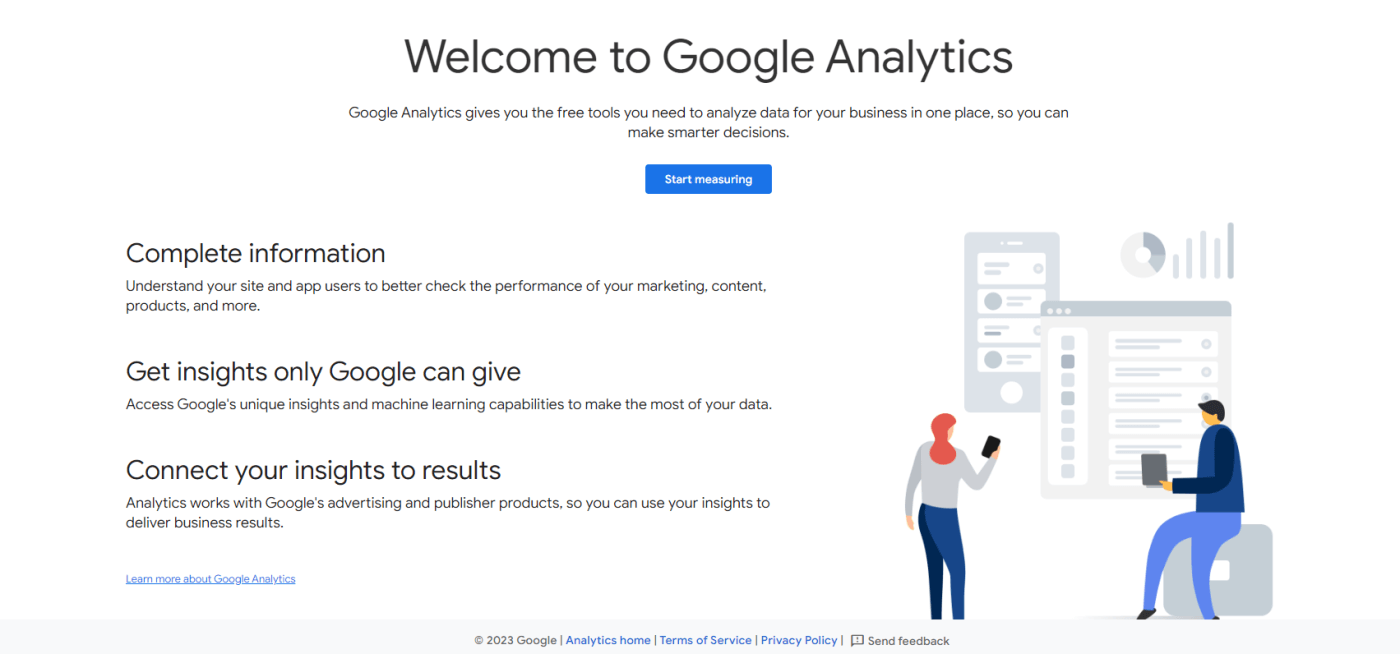 Let’s say you’re a financial advisor looking to connect with potential customers through a website. You've got an awesome online presence, yet it's not bringing the outcomes you anticipated.
Let’s say you’re a financial advisor looking to connect with potential customers through a website. You've got an awesome online presence, yet it's not bringing the outcomes you anticipated.
The most successful financial advisor websites have effective methods of turning visitors into clients for their business. In the digital era, you need a strategic approach to engage and build lasting client relationships.
So, how do the best financial advisor websites turn visitors into prospects and clients?
When visitors feel welcome to your virtual storefront, a website capable of converting casual users into customers becomes your reality. This isn’t some magical process; rather, it's a strategic play of effective marketing techniques.
Discover the key strategies the best financial advisor websites employ to achieve this conversion magic.
Table Of Contents:
- Why Marketing Matters for Financial Advisor Websites
- They have a good website design
- They craft persona-based content for audience engagement
- They monitor performance for website optimization
- Work With the Keywave Digital Team Today!
Why Marketing Matters for Financial Advisor Websites

Inbound marketing plays a critical role in transforming financial advisor websites into lead-generating platforms. While it mainly drives traffic, it's also about producing leads that convert into long-term clients. Here are the ways digital marketing boosts the web presence of financial advisors:
Make a Strong First Impression
Your financial advisor website is an essential part of your digital presence. Through effective marketing strategies, your website can create a positive initial encounter for your target audience.
Think of your website as a stage for a positive client-advisor relationship. From design aesthetics to informative content, every element contributes to the overall impression.
Harness Digital Strategies for Lead Generation
Statistically speaking, effective inbound marketing has proven crucial in generating website traffic. According to Serpwatch.io, this type of digital marketing strategy is behind more than 90% of all clicks online.
Inbound marketing strategies to consider are search engine optimization (SEO), social media management, email campaigns, and quality content creation. These are all geared towards capturing visitors and drawing their attention further.
When you have a well-executed financial advisor marketing, site visitors are transformed into viable prospects – enhancing the lead-generation process.
Foster Trust and Credibility
Remember, trust is the currency of the financial realm.
Beyond just gaining leads is the need to build trust between you as a financial advisor and your target clientele.
Whether they are visiting your website or interacting on your social media pages, you need to communicate your unique value proposition to them.
One way successful advisors achieve this is by creating blog articles that offer valuable insights on topics related to financial planning. As you demonstrate your expertise, you also establish trust and build credibility. These are the key components in converting site visitors into loyal clients.
They Have a Good Website design

The essence of a successful financial advisor website lies in its user experience. An intuitive navigation and well-thought-out website design play pivotal roles here.
Importance of Intuitive Navigation
Consider your own browsing habits: how long would you stick around on a website if the platform is not user-friendly? Probably not very long, right?
Most people tend to exit websites if they cannot easily find the information they're looking for. So, making sure your site is easy to navigate is essential in keeping visitors engaged and converting them into potential clients clients.
Ensure all navigation menus are clear and CTA buttons are placed strategically. A clean, intuitive, and easy-to-navigate design ensures that visitors stay engaged and learn more about your financial services.
User-Friendly Website Design
Intuitive navigation is a key factor in creating a user-friendly design. If we liken it to walking into an office, think about how off-putting cluttered desks and poor signage can be. Wouldn't you rather walk out than stay?
Your website's aesthetic should invite users in like welcoming décor does for physical offices. Think of clean lines, harmonious color schemes, and professional images representing your business. These design elements help make a visitor feel connected while browsing through different sections of your website.
They craft persona-based content for audience engagement

Understanding your target audience is the first step towards crafting relevant content. It's about knowing their interests, challenges, and aspirations.
This understanding lets financial advisors tailor website content that resonates with prospective clients, driving traffic, and fostering trust.
What is Persona-Based Content Marketing?
It involves creating and delivering content that is tailored to specific audience personas. Audience personas are fictional characters representing groups or segments of your target audience.
Persona-based content marketing aims to ensure your content resonates with your target audience. Building audience personas allows you to address their specific needs and pain points.
By centering your content strategy around specific personas, you create more relevant content that leads to effective marketing efforts. Follow these tips on how to craft persona-based content for your financial advisor website:
Use Consistent Brand Voice
A consistent brand voice plays a significant role in fostering trust and forming client relationships.
Consistency in your brand voice helps in establishing and reinforcing brand recognition. When you have a unified tone across all your digital marketing platforms, your audience feels connected to you. They are more likely to remember and recognize your brand, which is crucial in a competitive market.
Engage Prospects with Personal Touches
You should make your audience feel more connected and valued to gain long-term clients. One way is by adding personal touches to your website.
Implementing dynamic content and adding professional bios can help you connect with users. Bios give your prospects a sense of who you are as a financial advisor. Aside from this, you can share a story of your brand and the people behind it.
This approach builds trust and boosts your lead-generation efforts. When people visit a page that feels familiar and friendly, they're far more likely to stick around and explore the other pages.
Remember, every piece of personalized content offers another opportunity to build credibility and rapport with your prospects.
Post Website Content Consistently
Your goal doesn’t end with the initial interaction. If you want to keep your audience engaged, blogs and articles should be posted regularly.
For instance, if a visitor checks out a blog post about estate planning but finds no further information or resources related to it, they're likely to bounce off quickly.
Keeping your content fresh and posting consistently will increase brand exposure. When more resources are available on the website, visitors will spend longer reading blogs and topics that interest them. This strategy will keep users informed while improving your marketing funnel.
Aside from creating new and original content, we recommend bringing your old blogs up to speed. Old content can be updated and refreshed at least once a year if you want to gain new traffic.
They Monitor Performance for Website Optimization
 Your financial advisor website is a key player in your digital marketing strategy. After setting up your website, you must monitor its performance actively.
Your financial advisor website is a key player in your digital marketing strategy. After setting up your website, you must monitor its performance actively.
Why? Because knowing what works and what doesn't lets you make necessary changes or updates. This is where tools like Google Analytics come into play.
What is Google Analytics?
Google Analytics (GA) is a free platform you can use to collect data and analyze the performance of your website. This web analytics tool utilizes tracking codes to retrieve data on user traffic and behavior data. When integrated into your website, these codes provide comprehensive insights into user behavior.
From visitor demographics to page interactions, Google Analytics gives you a 360-degree view of your online platform's performance.
The best financial advisor websites are utilizing Google Analytics to their advantage. These are some ways you can maximize this tool for your website:
Analyze User Behavior
At its core, Google Analytics allows you to analyze various aspects of user engagement. From the number of visitors to the time spent on a page, the GA data gives you an overview of how users engage with your website.
For instance, how much time spent on different pages can reveal which topics resonate with them the most. Through user behavior analysis, you can improve your future content creation efforts and enhance user engagement.
Detect Problematic Areas
Beyond just understanding user behavior, monitoring performance also identifies problematic areas of your website.
Most websites face numerous challenges. In Google Analytics, you can monitor your website in real-time and identify potential issues quickly.
Slow page loading times, high bounce rates, and user engagement challenges are just a few examples. If visitors leave a page quickly, it could indicate slow loading times or low-quality content.
Identifying these issues promptly is crucial for maintaining a positive user experience. Through real-time monitoring, you'll be able to fix them before they negatively affect conversion rates.
Tailor User Experience
A personalized user experience fosters trust among prospects, increasing their likelihood of becoming actual clients. The goal isn’t only generating leads but also building relationships.
User experience is a key factor in website success. It refers to the overall satisfaction a user gets from visiting your website. Factors such as design, accessibility, and content quality significantly influence UX. By analyzing user behavior in Google Analytics, you can make data-driven decisions to enhance the overall experience.
Adapt to Search Engine Updates
Search engines frequently update their algorithms. These updates can impact your website's visibility in search results, affecting its ability to attract new visitors and generate leads.
Monitoring Google Analytics data is the key to adapting to algorithm changes. Regularly analyzing metrics allows you to spot sudden changes in user behavior. We recommend at least weekly check-ins to identify any changes.
A robust performance monitoring system will help you stay on top of these changes and adapt your SEO strategy accordingly.
Work With the Keywave Digital Team Today!
Let's review what we've uncovered about how the best financial advisor websites turn visitors into prospects and clients.
First, it all starts with a solid digital marketing strategy that harnesses inbound techniques to draw and generate traffic. Then comes the pros of having a good website design and persona-based content. Regular monitoring of website performance is no less crucial.
If you want to start converting website visitors into clients, it’s time to work with an expert like Keywave Digital. We know how to take your business to the next level and grow your client base. Our websites for financial advisors have professional designs and powerful features.
Reach out to us if you want to have an online presence designed to turn visitors into clients!






